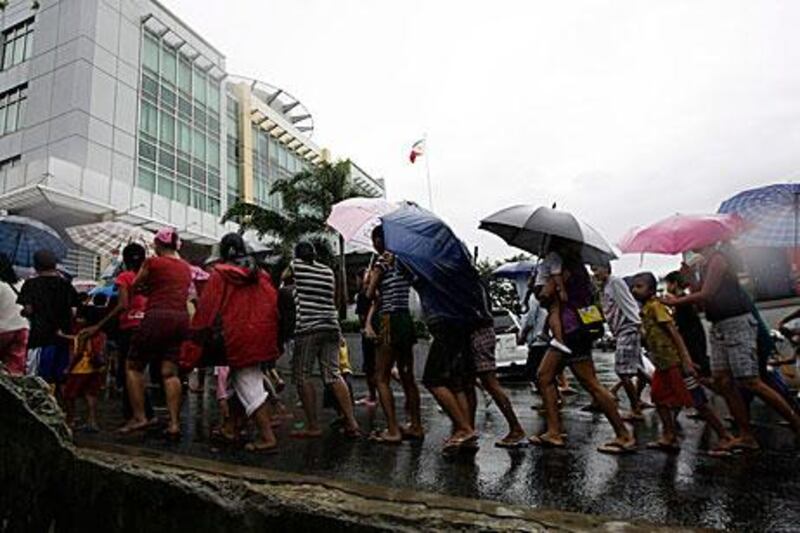MANILA // Two people were killed as another tropical storm swept across the Philippines today, triggering landslides in the mountainous north and dumping more heavy rain on the flood-battered capital.
Tropical Storm Kai-tak hit the north-east of the main island of Luzon before dawn, with powerful winds and dumping up to 35 millimetres of rain an hour on a vast farming region, the state weather bureau said.
Areas to the south that were trying to recover from devastating floods last week, including Manila, also endured strong rain, prompting authorities to warn residents in low-lying areas of the capital to be ready to evacuate.
The worst-hit areas this morning were four small northern farming towns, where water reached neck-deep in some areas and landslides cut off a major motorway, said Melchito Castro, the civil defence chief in the region.
"We have been experiencing really heavy rains since last night, and our rescuers have evacuated some residents," Mr Castro said.
Two people died in the far north, including a 47-year-old man who drowned in a swollen river, adding to the 95 deaths in and around Manila during last week's floods.
Norma Talosig, the civil defence chief for north-eastern Luzon, said authorities there were closely watching the Cagayan river, the country's largest river basin, amid fears it could overflow.
At more than 500 kilometres long, the heavily silted Cagayan river is the longest in the country and cuts across four north-eastern agricultural provinces.
"The water level is rising, but it has not yet reached critical levels," Ms Talosig said. "The danger is that when it does overflow, it will flood hundreds of hectares of agricultural production areas and communities."
More heavy rains were expected in the north-east later today, she said.
"When the storm's outer bands hits us, it's like a whip that's deadlier."
Rain was also falling in and around Manila on the other side of the Sierra Madre mountain range to the south-west, where more than 300,000 people were still in evacuation shelters following last week's floods.
The National Disaster Risk Reduction and Management Council said many low-lying farming areas near Manila remained flooded, and with the fresh rain there was little chance of the waters receding anytime soon.
Benito Ramos, the council's chief also said Kai-tak had not yet caused any major fresh floods in Manila, 80% of which was submerged last week amid an intense 48-hour deluge triggered by another tropical storm.
However, he said people in coastal areas of Manila and others in dangerous areas should be prepared to leave their homes if the rains worsened.
Local governments declared school holidays in some areas of Manila because of the heavy rains, while several domestic flights were delayed or cancelled due to bad visibility.
Weather forecasters said Kai-tak was expected to move across Luzon, and exit into the South China Sea towards Hong Kong on Thursday morning.





